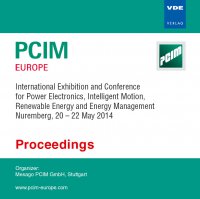Influence of Danfoss Bond Buffer and Cu-Wire Bonds on the Electrical Switching Behaviour of IGBTs
Conference: PCIM Europe 2014 - International Exhibition and Conference for Power Electronics, Intelligent Motion, Renewable Energy and Energy Management
05/20/2014 - 05/22/2014 at Nürnberg, Deutschland
Proceedings: PCIM Europe 2014
Pages: 8Language: englishTyp: PDF
Personal VDE Members are entitled to a 10% discount on this title
Authors:
Mannmeusel, Guido; Baessler, Marco; Stroebel-Maier, Henning; Osterwald, Frank (Danfoss Silicon Power GmbH, Germany)
Becker, Martin (Fachhochschule Kiel, Germany)
Abstract:
A new bonding and joining technology for power modules has been developed to fulfil ambitious lifecycle requirements of the automobile and renewable energy markets. Since today´s bonding and joining technologies are not sufficiently reliable, the solder joint between DBC and the dies is replaced by a sintered joint. Additionally, a copper plate is sintered on top of the die surface metallization, and traditional aluminium bond wires are replaced with copper wires. In this paper the influence of this new technology, called “Danfoss Bond Buffer (DBB)”, on the electrical characteristics of the semiconductors in power modules will be discussed. It will be shown, that this new technology has an essentially positive influence on the static parameters and the short circuit behaviour of the semiconductors. The measured forward voltage is significantly reduced, because of the sintered copper plate on the die surface and the copper wire bonds. This effect was predicted by a simulation of the current distribution in the bond wires and the copper plate of the Danfoss Bond Buffer. The short circuit robustness is significantly increased due to the additional thermal mass of the sintered copper plate on the dies, reducing the Zth J-C, and the excellent thermal conductivity of the sintered joint between dies and DBC, reducing the Rth J-C. Neither the dynamic switching characteristics of the dies are changed significantly, nor the robustness to turn off overcurrent is influenced by the Danfoss Bond Buffer, so no gate drive circuit or other supporting component changes are necessary.


